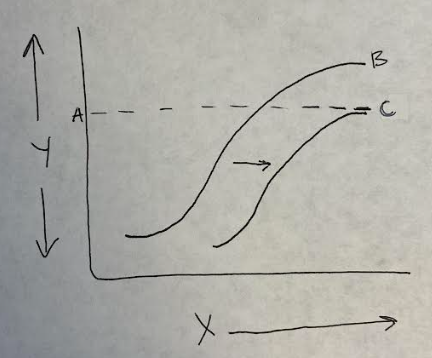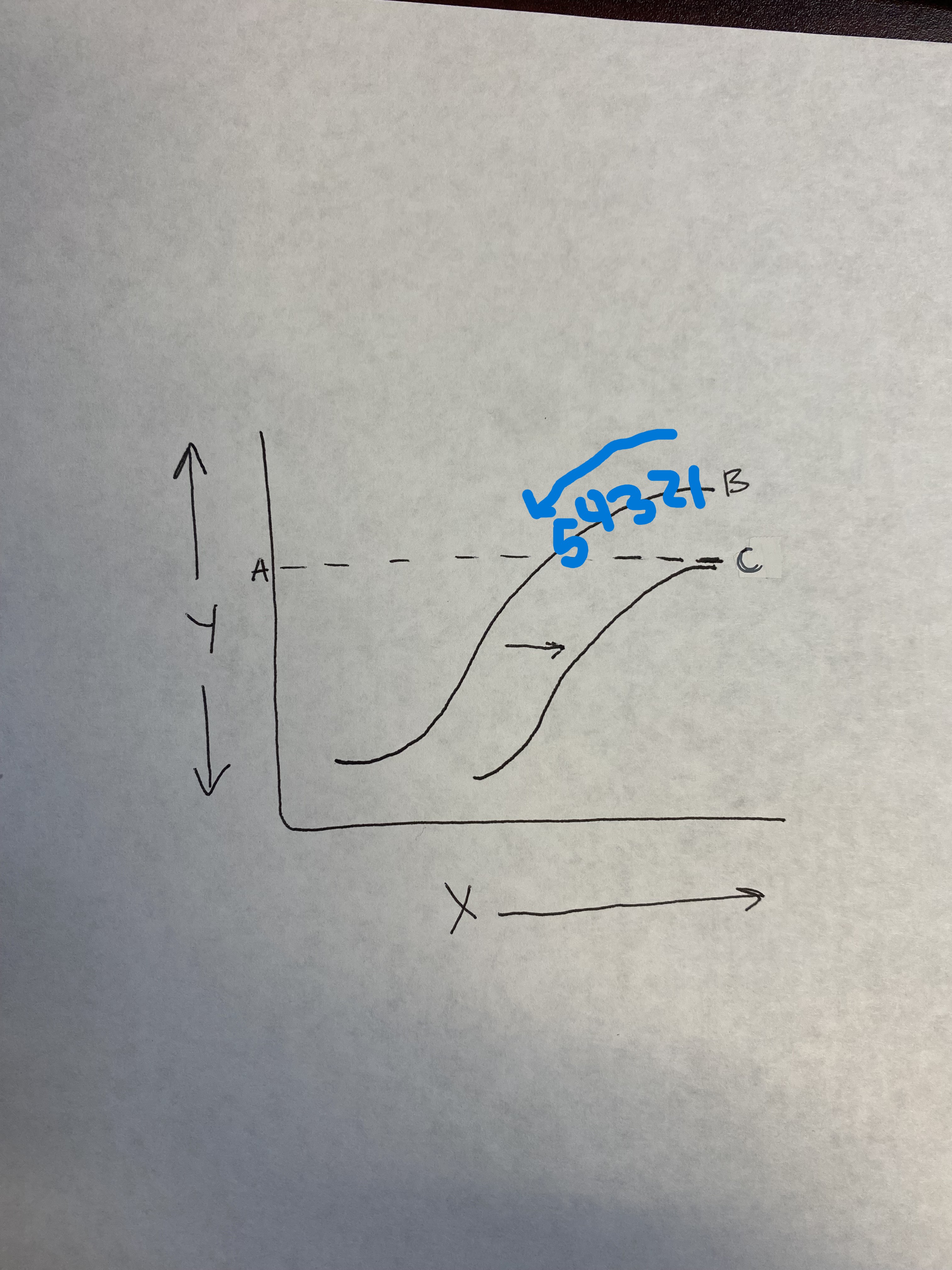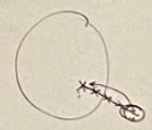Mating Systems
1/64
There's no tags or description
Looks like no tags are added yet.
Name | Mastery | Learn | Test | Matching | Spaced |
|---|
No study sessions yet.
65 Terms
Mating Systems (Includes 3 things)
includes all of the behaviors involved in acquiring a mate including the nature of the social bonds between the sexes (if there are any) and contribution of sexes to parental care
Basic behaviors that help define a mating system: (6)
display behaviors
intersexual competition for males
sexual division of investment in gametes or parental care
copulations (frequency, timing, and with whom)
social pair bonds
whether or not juveniles help
Factors Used to Categorize Mating Systems: (3)
social pair bonds
gene flow
ecological factors
How mating systems are described
most birds have one dominant behavior used to describe their mating system
within a main mating system, some or even most individuals of a given species may use alternative or opportunistic tactics (ex. extra pair copulations)
2 Broad Categories of Mating Systems:
Monogamy
Polygamy
Monogamy in Birds (stat & specific term)
90% of birds are monogamous
specifically they are socially monogamous
Socially Monogamous
help each other to raise their kids but take advantage of other copulations when they can
Monogamous Systems (what does this mean? how is it inferred?)
each male and female have a full on social bond with one other individual
this can be inferred from close proximity and coordination of breeding activity
Monogamy in Fishes & Mammals (how prevalent & why)
only around 3% are monogamous
because there is less parental investment
males cant provide incubation or milk
Example of a Mammal that IS Monogamous
Wolves
males can provide food
Polygamy in Birds (stat + what it is)
10% of all bird species are polygamous
males or females pair with one or more individual
Types of Polygamy: (4)
Polygyny
Polyandry
Promiscuity
Variable Systems
Polygyny
1 male with 2+ females
Polyandry
1 female with 2+ males
Promiscuity (what? does this imply the same things as for humans?)
usually no male care provided at all
does NOT imply indiscriminate mating
Variable Systems
can vary depending on level of competition surrounding pair bonding
What explains the unusual presence of monogamy in birds? (3 things)
Endothermy
Males can help
Lack of opportunity for polygamy
Endothermy
they have fragile eggs that require many days of incubation
males can contribute either through provisioning the female or by sharing in the duties of incubation
How can male birds help compared to mammals?
males have the ability to provide valuable parental care after the chicks have hatched (provisioning chicks)
most mammals and fish cannot help in this regard
Lack of opportunity for polygamy (3 reasons)
highly synchronous breeding
high levels of competition
resources aren’t clumped
Example of a lack of opportunity for polygamy
Longspurs
mate over only 1-2 days
Conditions under which polygamy can evolve: (2)
mates/resources have to be defendable
most likely spatially or temporally clustered (so one male can take control of the resources)
individuals have to be able to take advantage of those potential opportunities
Why is polygyny generally more common than polyandry? (3 reasons)
females have to invest heavily in eggs
males are able to desert as soon as copulation occurs- sperm is cheap!
tends to be a lack of certainty of paternity
Costs and Benefits of Mating Systems
each system might have different costs & benefits for mates, which might lead to competition among individuals for control of that particular bout of mating
Pied Flycatcher (what kind of bond?)
a male and female form a primary care bond
Cost & Benefits- Male Pied Flycatcher
when the female mates with the territorial male and starts setting up her nest, that male will move to a distant secondary territory in an attempt to find a second mate (so the first female doesn’t find out)
secondary females are tricked into thinking they are the primary mate, but they usually have lower reproductive success because the male puts most care into the primary female
no cost, high benefit
Cost & Benefits- Female Pied Flycatcher
females which lose their mate during incubation actively solicit copulations from neighboring males
they want to trick them into helping raise offspring that aren’t theirs
only happens during incubation
Salt Marsh Sparrows Study
no territorial defense, no parental care, no pair bonds
males and females only come together to exchange gametes
this system lends itself to multiple mating’s across species
Salt Marsh Sparrows Stats (3)
in 57/60 broods- at least 2 of the chicks sampled and genotyped resulted from multiple mating’s by females
~1/3 of broods had a different father for each chick
just over ½ of the nests had multiple fathers having fathered at least 2 or more chicks
Salt Marsh Sparrows- Distance of Male Nests
many males sire chicks in multiple nests up to 1.4km away from their original capture site
some nests were up to 0.5km away from each other
implies that they move around a lot to find these opportunities to gain fitness
Monogamous Systems Variation:
found within the length of the pair bonds
can range from a couple of days to a lifetime (ex. swans, albatross)
Polygynous System Variation (2 Varieties)
resource defense polygyny
female defense polygyny
Resource Defense Polygyny (+ example)
linked to food or nest sites
Red-winged Blackbird females tend to cluster together on better nesting territories
Polygyny Threshold Model
predicts that if male territories vary enough in quality, then a female settling on an already occupied but superior territory (as a secondary female) could rear as many offspring as she could by being a monogamous (primary) female on a crappy territory
females must decide if they want to be the primary or secondary female
this is true even if by settling on a better territory she has to forego parental assistance from the male

Polygyny Threshold Model- Label
X- Environmental Quality
Y- Female Fitness
A- Polygyny Threshold
B- Primary Female (1*)
C- Secondary Female (2*)
Polygyny Threshold Model Explained
the first female in the system will settle in the best spot (1) and they will line up after that going down the line (blue), with spots lowering in quality
above the line = better fitness
below the line = equal fitness
potential secondary female is gaining environmental quality by being a secondary female on a better territory, rather than being the sole female on a bad territory

Another Visual for Polygyny Threshold Model
Red-winged Blackbird territories are on the edge of a lake in cattails
the farther from the water = worse territory

Female Defense Polygyny (precondition?)
males are defending groups of females rather than resources
really rare in birds!
Precondition: natural clumping of females for some reason
Female Defense Polygyny Example
Oropendolas
females like to nest together in trees for some reason
males can potentially defend trees with all the nests in it
How to tell if a system is polygynous?
males are bigger than females
Polyandry (2 types)
Cooperative Polyandry
Sequential Polyandry
Cooperative Polyandry
2+ males mating with a female and assisting in rearing young
Characteristics of Cooperative Polyandry: (3)
saturated environment
very stable groups
skewed sex ratio - more males than females
Cooperative Polyandry Example
Galapagos Hawks
Galapagos Islands = not a lot of habitat available (saturated)
Females hold maternally inherited territories (stable groups)
very few females (skewed sex ratio)
Sequential Polyandry
females are mating with and laying clutches of eggs for a sequence of males
males are the ones that have nests
females are larger and are the territorially aggressive sex
Rare!!
Sequential Polyandry Example (Birds & Mammals)
Birds: Jacanas
females will kill a male’s offspring in an effort to then lay eggs in his nest
Mammals: Lions
Normal Sex Ratio
50/50
Promiscuity
males and females only come together to mate
2 Types of Promiscuity
resource defense
display site defense
Resource Defense Promiscuity
males are defending a resource that females need to visit
females leave after they use the resource and perhaps copulate with the male
Resource Defense Promiscuity Example
Orange-rumped Honeyguide
resource being defended - honey
Why Display Site Defense? (2 reasons)
Display sites are set up if resources or females aren’t monopolizable
either super abundant or difficult to defend
Precocial young render parental care to little to no value
male doesn’t need to be there
Example of a Display Site (+2 bird examples)
a lek
Manakins
Grouse species
Display Sites - Manakins
lekking territory (area for elaborate displays/dances
Display Sites - Grouse Species
males come together and females pass through the territory
best males (alpha) are in the middle, beta males are on the edges (but are important too)
females still walk around and make choices!
Consequence of a lekking system
considerable variation in male copulation
(some get a lot, others get few, some get none)
Why should a lek even form? (2 reasons)
potential hotspot
potential hotshot
Potential Hotspot
females congregating in certain areas for some reason
Potential Hotshot
some younger, less successful males will cluster around the better males and learn from them
Variable Mating system Example
Dunnock
depending on the environment, can show monogamy, polygyny, polyandry, or even polygynandry (multiple individuals of each sex)
Underlying Structure to Switching Between Mating Systems:
Sexes establish independently but generally have overlapping territories in relation to prey abundance
when food is dense, male might overlap with one or more females
at low densities, males can’t hold large territories and leave females with comparatively larger territories- female overlaps with multiple males
Driven by environmental resources and whose territories are overlapping
Extra Pair Copulations
Copulations that occur with an individual other than their social mate
most individuals will take advantage of this if they can
very common (every avian family)
Most males participate because SPERM IS CHEAP!
How to Detect Extra Pair Copulations: (3 ways)
genetic paternity testing
plumage variation
studies where the male of a pair bond has been vasectomized
Extra Pair Copulations Example
Purple Martins (take this to another level)
colonial nesters
older males arrive first on breeding grounds & establish a nest with a mate
these males sing a special song to attract younger males later, once they establish a nest the older male mates with the mate of the younger males (cuckholded)
Purple Martin Fitness Results
Older males with their female have about 4.5 eggs
by mating with the younger males females they add 3.6 eggs (increase in fitness)
Younger males are producing 30% of the eggs with their females (losing fitness)